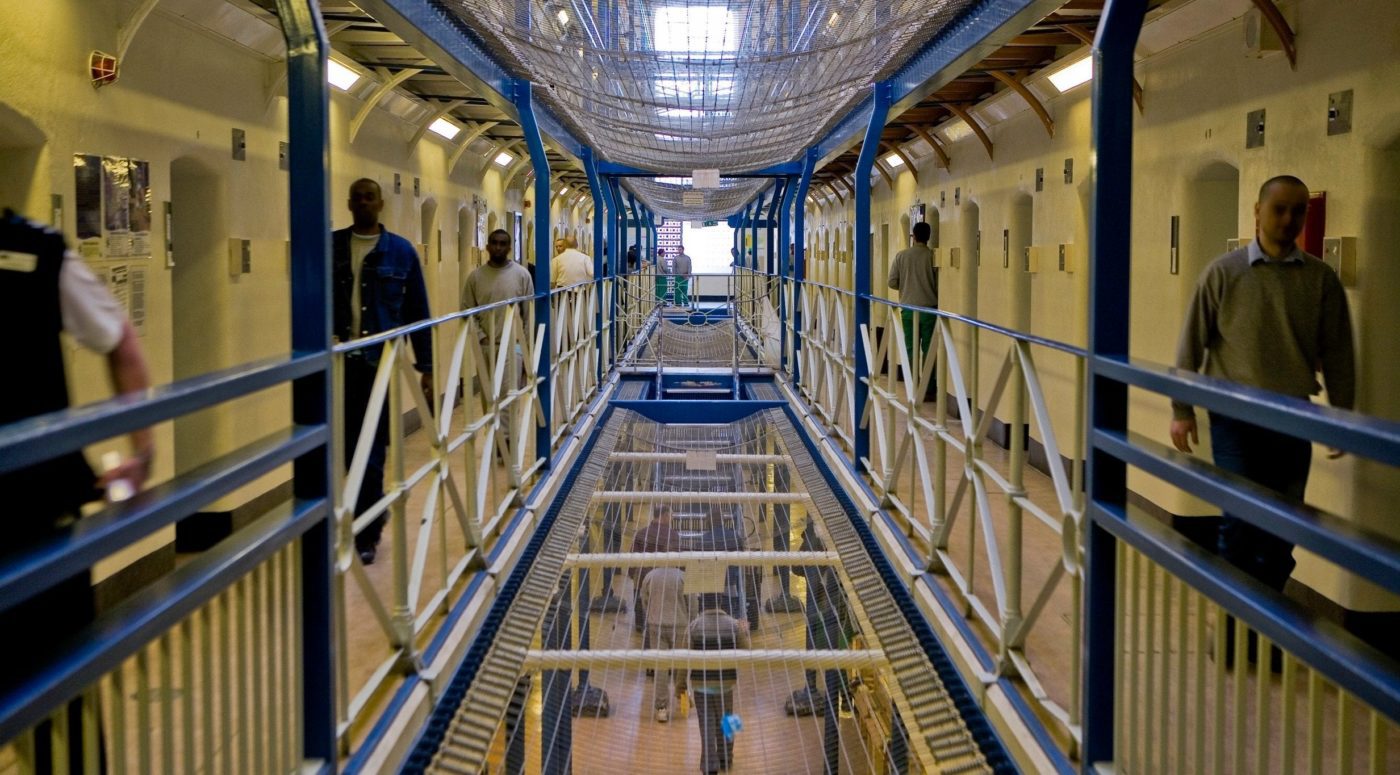

Whether you are a first time offender or have done time before, facing a prison sentence is daunting. You are probably wondering how many hours each day you will spend in your cell, if you will be permitted to work, and how often your family will be allowed to visit you. The answer to these questions depends on the type of prison that you are sent to. The different security categories signify very different levels of freedom for inmates. There also is a different system in place for women, than for men. This article explores the main prison security levels and looks at the circumstances in which you can change security category. It also explores the procedure for appealing prison security category. Finally, it discusses the difference between men and women’s security categories. We hope that you find this information useful and that you are able to use it to improve your experience in prison. Remember, when it comes to navigating the prison system, knowledge is power.
What are the four main prison security levels in England and Wales?
In England and Wales, prison security levels are based on three factors: the perceived risk that the prisoner will escape; harm to the public if they were to escape and the threat to the control and stability of a prison. Male prisons are organised into four categories, A to D. The details of these categories are set out in the prison service instruction 40/2011 (PSI).
The PSI explains that a prisoner should be assigned to the lowest security category that meets their needs. They should never be placed in a lower security category because of lack of space within prisons. However, if there is insufficient space available in their assigned security category in the prison estate, a prisoner may be assigned to a higher security category.
Category A
Category A is the highest security category. These prisons house the prisoners who are perceived to pose a high threat to the public, police, and/or national security if they escape. HMP Belmarsh is a category A prison, as is HMP Manchester. These prisons are reserved for prisoners who have been sentenced for serious crimes. Within category A prisoners, prisoners are segregated into Standard Risk, High Risk, and Exceptional Risk, based on their likelihood of escaping. The general idea is that it should be impossible to escape from a category A prison.
Category B
These prisons are also known as local or training prisons. Local prisons house prisoners taken directly from court in the local area, whereas training prisons are for long-term and high security prisoners. HMP Wormwood Scrubs is a category B prison as is HMP Pentonville. All prisoners who are not allocated to category A will begin their prison life as category B prisoners. They are defined in the PSI as prisons for prisoners ‘for whom escape needs to be made very difficult.’ However, escapes do occur from category B prisons such as an escape by two prisoners from HMP Pentonville in 2017. Prisoners who are serving a sentence of under two years may remain in a category B prison for their entire sentence.
Category C
Category C prisons are training and resettlement prisons. These are the most common type of prison. They provide prisoners with the opportunity to develop their own skills so that they can find work and resettle back into the community when they are released. Category C prisons are for ‘those who cannot be trusted in open conditions but who are unlikely to try to escape.’ Examples of category C prisons include HMP Birmingham and HMP Brixton.
Category D
Category D prisons are open prisons. These have minimal security and allow prisons to spend quite a significant portion of their time outside of the prison walls in order to work, attend education, or otherwise rehabilitate themselves. Prisoners have to go through a risk assessment process in order to qualify for open prisons. Being placed in a category D prison is a privilege kept for those prisoners who are considered unlikely to try to escape. If it is your first offence and it is a non-violent or drug related crime, you could be placed in a category D prison within a month of beginning your sentence. Examples of category D prisons include HMP Hatfield and HMP Spring Hill. The PSI suggests that prisoners should not spend more than two years in open conditions.
Can you change prison security levels throughout your sentence?
The recategorisation of prisoners is also dealt with in PSI 40/2011.
Prisoners serving longer sentences should have the opportunity to progress into lower security levels as their sentence progresses, dependent on good behaviour. The categorisation of a prisoner should be reviewed at regular intervals to consider whether there has been a change to the risk that they present. The timing of these intervals depends on the length of the sentence; it could either be every six months, or annually.
In some circumstances, your categorisation may be reviewed at other times. This includes if there has been a significant change in your circumstances. This might be a positive change, such as you having successfully completed drug rehabilitation. It could also be a less positive development such as a change in your home circumstances that is perceived to increase your risk of absconding. In some cases, such as involvement in serious criminal activity whilst in prison, a prisoner could also be moved to a higher security prison.
Recategorisation to a lower category is not an automatic progression or right; indeed, there needs to be clear evidence of reduction in risk levels compared to previous assessments. For example, when moving a prisoner to category D, the evidence needs to show that the prisoner has proven themselves to be trustworthy and that they present no unmanageable risks.
How do you appeal against the type of prison you are sent to?
If you believe that your prison categorisation is unjust, you may be able to appeal. You should seek the advice of a solicitor specialising in prison law and explain as clearly as possible the facts of your case so they can make a realistic assessment of whether you might be able to appeal.
The PSI establishes that prison categorisation decisions must be fair, transparent, and objective. Generally, the information justifying the categorisation decision must be recorded on your prison file, which you have the right to see. In some circumstances, some information may be withheld. For example, if this is justified on the grounds of national security, or if it is believed that it would risk your physical or mental health if you were to see the reasoning. Withheld information should be recorded on a separate form. In some circumstances, your solicitor may be able to obtain some or all of the information recorded on the separate form.
Appeals should ordinarily be made through the complaints system at the prison where you are remanded. The exception to this is category A prisons, where the appeal can still be submitted through the complaints system, but it will be sent to the Directorate of High Security for their response. The prison is obliged to give the reasons behind your categorisation decision so in your appeal you should request a full explanation of the decision in writing.
The Prisoners’ Advice Service has produced a helpful guide to prison categorisation and recategorisation appeals, which can be viewed here.
Why are men’s prison categories and women’s prison categories different?
Unlike men’s prisons, women’s prisoners are not separated into exact A to D categories. Instead, the two main categories of prisons are open and closed conditions. Closed conditions are for those whom ‘the very highest conditions of security are not necessary but who present too high a risk for open conditions or for whom open conditions are not appropriate.’
Meanwhile, open conditions are for prisoners who are considered low risk and who can reasonably be trusted in open conditions. The reason for this is that very few women need to be held in high security prison environments.
With closed conditions, there are two further prison categorisations for women. Category A is for women whose escape would be considered highly dangerous to the public, police, and/or national security. Furthermore, ‘restricted status’ is for any female young person or adult whose escape would present a serious risk to the public and who are required to be held in designated secure accommodation. Very few female prisoners are allocated to these categories.
Where to get further help
If you are seeking advice or assistance regarding your prison matter contact Stuart Miller Solicitors today. Our team of specialist solicitors can advise you on your rights as a prisoner, and can tell you whether you can appeal against your security categorisation. The right advice could help you get the best out of your prison sentence and ensure that you are treated fairly by the system. Contact us today for a no obligation consultation on your case.
OUR COMMITMENTS TO YOU:
-
Responsive
A legal expert will consult you within 24 hours of making an enquiry.
-
Empathetic
We will always treat you with trust, understanding and respect.
-
Specialised
Your case will be handled by an expert who specialises in your type of offence.
-
Proactive
We will take early action to end proceedings as soon as it is practically and legally possible to do so.
-
Engaged
You will be kept updated on your case at all times. We will provide a named contact available to answer your questions.
-
Caring
We understand this is a difficult and stressful time for you and your family. Our team will support you every step of the way.
-
Tenacious
We will never give up on your case. We fight tirelessly to get you the best possible outcome.